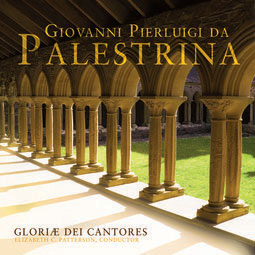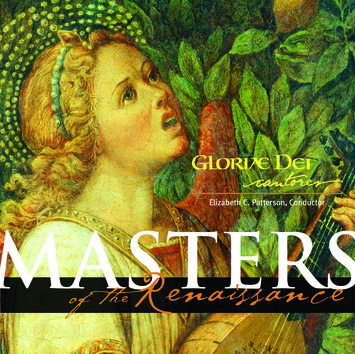Exploring the Multifaceted Marvel of Polyphony
How synchronized spiritual song shapes the hearts of the faithful.

We have all heard it, yet most of us would not be able to name it. The term polyphony (from the Greek for “many sounds”) is used to describe music that employs simultaneous yet independent melodies. This can occur in secular or spiritual songs, and the spiritual realm includes both sacred music (typically using a biblical text in Latin for the liturgy) and religious music (typically using an extra-biblical text in the vernacular for outside the liturgy).
The Church’s vast collection of polyphonic songs — usually called motets — grew out of Gregorian chant in the Late Middle Ages (1100-1400). It developed further in the Renaissance (1400-1600), owing to the works of composers such as Cristobal de Morales, Tomas Luis de Victoria and Orlande de Lassus. Perhaps the best-known composer of this type of music was Giovanni Pierluigi da Palestrina, whom Pope Pius X praised in his 1903 motu proprio Tra le Sollecitudini.

The Holy Father believed Renaissance polyphony corresponded very well with Gregorian chant, “the supreme model of all sacred music.” Because of this smooth liturgical connection, high quality and timeless nature, Renaissance polyphony is also called classical polyphony.
Pope Pius XII continued this line of thought in his 1955 encyclical Musicae Sacrae, stating, “Everyone certainly knows that many polyphonic compositions, especially those that date from the 16th century, have an artistic purity and richness of melody which render them completely worthy of accompanying and beautifying the Church’s sacred rites.”
The Fathers of the Second Vatican Council took their turn addressing polyphony, stating in 1963’s Sacrosanctum Concilium that it is “by no means excluded” from liturgical celebrations, so long as it accords with the spirit of the liturgical action.
Getting a Handl on Sacred Music
Despite these authoritative statements, there was an abrupt loss of polyphony in many parishes in the 1960s —something Christopher Mueller wants to help reverse. The composer, choir director and musician has worked extensively in New York and Connecticut, and last year, he started a polyphony and chant-friendly foundation in an effort to encourage the use of sacred music in the liturgy.
The Christopher Mueller Foundation for Polyphony and Chant — so named in order to present a living face to a timeless art — conducts parish workshops, helps to set up choirs or scholas, encourages high school and college students to study sacred music and bring it into parishes, and is developing “starter kits” for those desiring to sing polyphony and chant.
Mueller said, “We are a new organization, and our primary purpose is to assist any person, group or institution that desires polyphony and chant in the Roman Catholic Mass.” This is only fitting, he believes, because both are “wondrously dignified forms of music that grew out of the liturgy and are inherently suitable for it. Why would we exclude from the Mass such a treasure ‘of inestimable value, greater even than that of any other art,’ as Sacrosanctum Concilium states so beautifully?”
Mueller’s best-known attempt to include sacred music in the Mass is his Missa pro editione tertia — music (in English and Latin) for the 2011 English translation of the Ordinary of the Mass. It has been purchased in the United States, Canada, the United Kingdom and Australia. This already far-reaching international influence will be expanded when Mueller conducts the music at English-language weekday Masses for World Youth Day in Krakow, Poland, in July.
“I am looking forward to these Masses to show the prayerful power of polyphony and chant, and I hope those in attendance — choir and congregation — will be inspired to advocate for this beautiful music in their home parishes,” Mueller said. “That’s really what the foundation is all about. We want to guide people so they are not overwhelmed by the sheer volume of sacred music available.” Once a liturgical context has been gained, Mueller will point inquirers to organizations such as the Church Music Association of America, Corpus Christi Watershed and the Choral Public Domain Library.
Even long before any such specific explorations, Mueller believes polyphony has a quality that appeals to everyone — whether they consider themselves religious or not. “Polyphony, as chant before it, ‘sounds like church’ to the general listener, and many people gravitate toward the rich texture of a polyphony, who may not as readily find solace in the solemn austerity of unison chant.”
Two examples of polyphony that seem to be readily appreciated by everyone can be found in the album This Is the Day by the Cathedral Singers. The third track, Alleluia! In Resurrectione Tua, was written by Mueller’s favorite composer, Jacob Handl, and is considered sacred polyphony. The ninth track, Spirit of Mercy, is by an anonymous composer and, while the distinction has been blurred in recent years, is considered primarily as religious polyphony. Both have a multidimensional tapestry that tends to appeal even to people who do not consider themselves sacred-music fans, Mueller has found.

Teaching to the Choir
Mueller’s assessment rings true for Kurt Poterack, professor of sacred music at Christendom College in Front Royal, Va. He has found both students and listeners have become enamored of sacred polyphony once they are exposed to it. Some students have even told him they had never heard such beautiful music before. Bringing this vocal art back to younger generations is satisfying to Poterack, who sees polyphony as “part of our ecclesial and cultural heritage.”
In fact, Poterack thinks any Catholic — whether attending the ordinary or extraordinary form of the Mass — should be able to expect to hear polyphony on Sundays and major feast days at cathedrals, basilicas and other large churches. He also stated, “Wherever it is possible to maintain a good music program with a well-trained choir, polyphony should be common.”
The Christendom professor explained, “While the music proper to the Roman rite is Gregorian chant, polyphony —especially that of the Renaissance — shares in the spirit, savor and inspiration of chant.” This similarity has gained it willing admittance into the liturgy by the popes, for the glory of God and the sanctification of the faithful, aims which any choir at a Catholic college should be thoroughly interested in, Poterack believes.
Nicholas Lemme shares Kurt Poterack’s profound appreciation for polyphony — along with many of his experiences. As professor of music at the Priestly Fraternity of St. Peter’s Our Lady of Guadalupe Seminary in Denton, Neb., Lemme has found most seminarians to be unfamiliar with the specifics of sacred music, but very open to learning them. Once they do, their appreciation for the musical heritage of the Church grows.
While Lemme’s primary focus is teaching Gregorian chant, he does direct a polyphonic choir of seminarians. Even though the future priests will not be singing motets once they are ordained — that will be left to their parish choirs —they do so now at seminary Masses. This gives them a chance to learn more about the Church’s sacred-music traditions and to appreciate the technical aspects of making polyphony work smoothly.
An all-male choir is different from what most Catholics experience in their parishes. There is still variety in the singing, but within a smaller range. However, that variety is enhanced when the seminarians collaborate in song with the Benedictines of Mary, Queen of the Apostles from Gower, Mo., a few times during the liturgical year.
Lemme gratefully pointed to polyphony’s ability to provide an increase in solemnity to liturgical functions, which helps the faithful receive God’s grace more fruitfully. The exact same message, presented in a less beautiful way, may not be able to break through hardened ears and hearts, he believes: “That’s the amazing power of music. Words whose rich meaning can easily be missed if they are presented in an ordinary way are marvelously transformed by a different method used to convey the very same words. It’s a beautiful thing.”
Whether sung for official Church services or for bringing the Gospel to other parts of life, spiritual polyphony provides a multidimensional yet beautifully coordinated testimony to the glory of God. It is a musical marvel that arose from the heart of the Church and continues to live as a symbol and instrument of the multifaceted nature of grace.
Register correspondent Trent Beattie writes from Seattle.
- Keywords:
- gregorian chant
- polyphony
- sacred music
- trent beattie

















